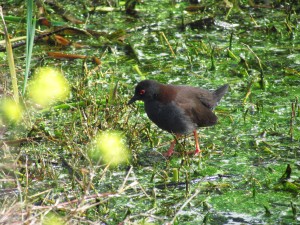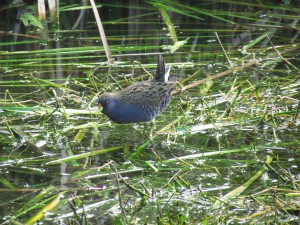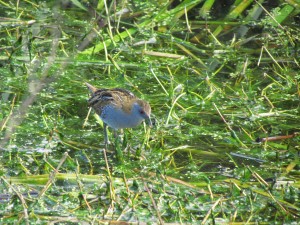Welcome to B & B Bird Files! This is our first time blogging so hopefully we find our blogging feet quickly. One of the ideas I had for the blog was to show people the common and the not so common birds that can be seen all around them, from their own backyard to their local park or wetland to reserves and national parks. To start with I thought I’d introduce people to the crake family.
A common enough group of birds that if you walk your dog around a local lake or wetland you have probably walked past and never noticed. And they are not easy birds to see, it took me two years to see my first crake despite hearing them calling on numerous occasions. So when I heard about a pond that offered views of all three Victorian species I jumped at the chance.
Crakes are some of the most difficult birds to see due to their tendency to stick to dense reed beds and flee at the first sign of danger. The easiest way to see them is to sit quietly looking at an exposed mud bank waiting for them to appear from the reeds to feed. These guys were hanging out in a pond at my favourite place to bird, the Western Treatment Plant (wtp) just out of Werribee. The wtp has a habit of providing excellent birding opportunities and I assure you there will be plenty more posts describing days there.
All these photos were taken on the same day, in the same pond and often all three species were visible at once, with more than one of each species generally present. The spotless crake above (obviously named) was feeding in the open, not two meters from my crouched position. Remarkably calm and unfazed by our presence the crake’s fed, often moving to within a metre of us. And just look at those legs and red eye-ring!
The Australian Spotted Crake is probably the most common crake at the wtp and through the suburbs of Melbourne. A striking bird, often all you will see is the flick of a white inverted ‘V’ on the tail as it darts back into the reeds.
The last crake here is the Baillon’s Crake, the smallest of the crake family in Australia. Although they can look similar to Spotted Crakes, Baillon’s Crakes are a lot more striking with their lighter colouring than the Spotted Crakes.
So next time you are out and about in your local wetland, keep an eye out along the reed beds and see if you can spot one of these guys because you will be in a select group of people who have.
In the next post I’ll start to look at some of the more common species you might see in your gardens or around your local areas like the quirky Grey Fantail featured at the top our blog. Stay tuned.



Leave a comment